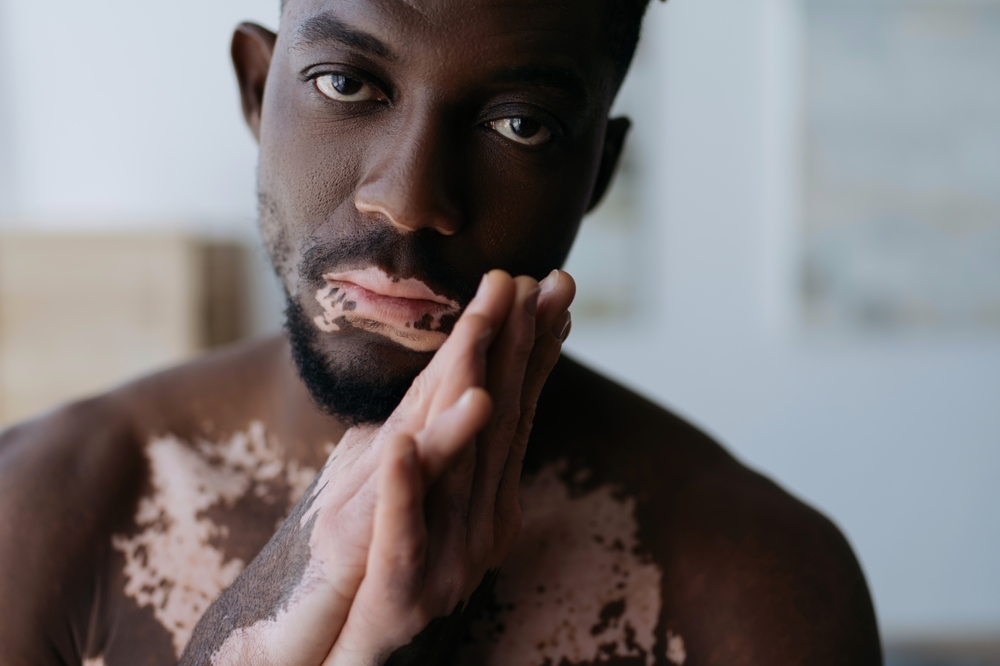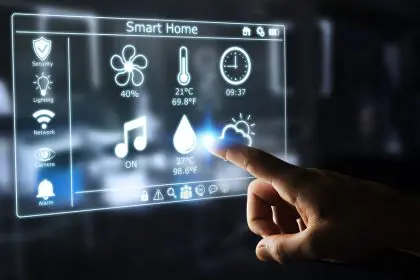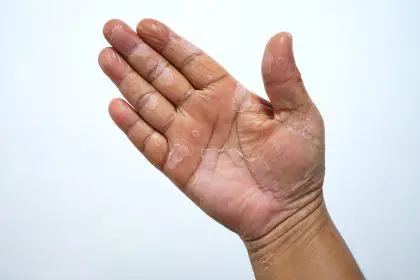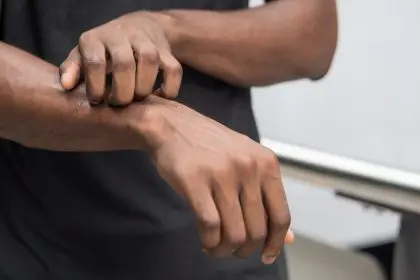You noticed the first small white patch on your hand and thought it was maybe just dry skin or a weird reaction to something you touched. But instead of disappearing like normal skin irritations, the patch grew bigger and started spreading. Now there are more patches appearing on your face, arms, and other visible areas, turning your once uniform skin tone into what looks like someone randomly splashed bleach across your body.
The physical changes are devastating enough, but they’re just the beginning of this nightmare. You’ve probably started noticing how people stare, whisper to each other when they think you’re not looking, or suddenly find excuses to avoid physical contact like they think your condition might be contagious. Family members make thoughtless comments about your appearance, and you find yourself avoiding social situations, wearing long sleeves in sweltering heat, or spending your entire paycheck on makeup trying to cover patches that seem determined to spread no matter what you do.
What you’re dealing with is vitiligo, an autoimmune condition where your immune system basically declares war on the cells that give your skin its color. While vitiligo can affect anyone regardless of race, it creates a particularly brutal experience in Black communities where the contrast between affected and unaffected skin is impossible to hide and where skin color carries deep cultural, historical, and social significance that goes far beyond simple appearance.
The contrast turns you into a walking target for stares
When vitiligo affects people with darker skin tones, the white patches create such a stark contrast that they’re immediately noticeable from across a room and completely impossible to conceal. While people with lighter skin might have vitiligo patches that blend in somewhat or can be covered with the right makeup, the same condition in Black individuals creates dramatic color differences that no amount of concealer can hide.
This visibility means you can’t choose when to reveal your condition or control how others react to your appearance. Every trip to the grocery store, every parent-teacher conference, every work meeting becomes a potential source of anxiety because you know people will stare and make assumptions about your health, hygiene, or what they think might be wrong with you.
The dramatic visual impact also triggers all sorts of misconceptions from people who assume you have some kind of skin infection, chemical burns, or other condition that reflects poorly on your lifestyle choices. You might find yourself constantly explaining that vitiligo isn’t contagious, isn’t caused by poor hygiene, and isn’t something you did to yourself, but these explanations get exhausting when you have to repeat them multiple times every single day.
Cultural identity gets stolen along with your pigment
In Black communities, skin color carries profound cultural, historical, and social significance that extends far beyond simple aesthetics. The devastating legacy of colorism, where lighter skin has been associated with privilege and opportunities while darker skin has faced discrimination and prejudice, creates incredibly complex emotions when a condition like vitiligo dramatically alters your appearance.
Many people with vitiligo report feeling like they’re losing fundamental parts of their racial identity as their skin becomes progressively lighter. Others struggle with feeling like they exist in some kind of cultural limbo, not fully belonging in Black communities anymore but obviously not fitting into white communities either, especially when vitiligo affects large portions of their body or highly visible areas like their face.
The cultural emphasis on appearance, grooming, and presenting yourself well in many Black communities can make vitiligo feel like a personal failure or source of deep shame. When looking polished and put-together is seen as a form of self-respect and community pride, having a condition that dramatically alters your appearance in ways you can’t control can feel like you’re letting down not just yourself but your entire community.
Children face a special kind of hell
Young Black people with vitiligo often endure particularly brutal challenges during the most critical periods of identity formation and social development. Childhood and adolescence are already times when fitting in and looking like everyone else feels like matters of life and death, and having a visible condition that makes you stand out in the worst possible way can be absolutely devastating.
School-age children with vitiligo frequently face relentless bullying, social isolation, and cruel comments from peers who either don’t understand the condition or use it as ammunition for their own insecurities. They might develop severe anxiety about participating in activities like swimming, sports, or even just changing clothes in locker rooms where their skin would be more visible to classmates.
Teenagers with vitiligo face additional torture around dating, self-image, and developing confidence during years when peer acceptance feels more important than breathing. The condition can completely derail normal adolescent development and lead to social withdrawal, depression, anxiety, and other mental health issues that continue destroying their lives well into adulthood.
Family reactions can save you or destroy you
How your family responds to a vitiligo diagnosis can completely determine whether you develop resilience and confidence or spend years drowning in shame and self-hatred. Some families provide incredible support, education, and fierce advocacy that helps their loved ones develop unshakeable confidence despite having vitiligo.
Unfortunately, other families react with shame, denial, or desperate attempts to hide the condition that can be psychologically devastating. Some family members might constantly suggest that you’re not trying hard enough to treat your vitiligo, or make comments about your appearance that reinforce feelings of inadequacy and differentness that eat away at your self-worth.
Extended family members or community members might have dangerous misconceptions about vitiligo being contagious or somehow related to poor health habits, spiritual problems, or other nonsense that creates additional stress and isolation for both you and your immediate family members who are trying to support you.
Dating becomes a minefield of rejection and anxiety
Vitiligo can completely destroy your confidence around romantic relationships and dating, especially in communities where physical appearance receives intense scrutiny and judgment. Many people with vitiligo report feeling like they need to disclose their condition immediately when meeting potential partners, while others agonize over when and how to reveal patches that might not be visible during initial encounters.
The constant fear of rejection based purely on appearance can lead people to avoid dating entirely or settle for relationships that aren’t fulfilling because they feel like their options are severely limited by their condition. Others develop crippling anxiety about physical intimacy or constantly worry that partners are only staying with them out of pity rather than genuine attraction and love.
Building genuine confidence and finding partners who appreciate you as a complete human being rather than judging you based on your skin condition becomes a crucial but incredibly difficult part of developing healthy relationships when you have vitiligo.
Professional discrimination destroys career opportunities
Despite laws supposedly prohibiting discrimination based on appearance or disability, people with visible vitiligo routinely face subtle and not-so-subtle discrimination in professional and social settings. This might include being passed over for jobs involving public interaction, receiving obviously different treatment in customer service situations, or being quietly excluded from social groups, networking opportunities, or workplace activities.
The discrimination is often just subtle enough that it’s nearly impossible to prove or address directly, but it can have massive impacts on career advancement, professional relationships, and overall quality of life. Many people with vitiligo report feeling like they have to work twice as hard as everyone else to prove their competence and worth in professional settings.
Social discrimination can be particularly devastating because it comes from people in your own community who should theoretically be more understanding and supportive. Being treated differently by neighbors, friends, or even strangers in public spaces creates chronic stress and social anxiety that can completely destroy your mental health and overall wellbeing.
Mental health impacts get completely ignored
The psychological devastation of vitiligo in Black communities is often severe but gets completely overlooked by healthcare providers who focus exclusively on the physical aspects of the condition while ignoring the emotional carnage. Depression, anxiety, social phobia, and body dysmorphia are incredibly common among people with vitiligo, especially when the condition is highly visible and extensive.
The relentless stress of dealing with a visible difference, combined with constant social stigma and discrimination, can lead to chronic mental health issues that completely destroy your quality of life and ability to function normally. Some people develop agoraphobia or social anxiety so severe that they can’t participate fully in work, school, or any social activities.
Mental health resources specifically designed for people dealing with visible differences or chronic skin conditions are practically nonexistent, especially in Black communities where mental health services are already less accessible, less affordable, and often culturally inappropriate for the specific challenges faced by people with conditions like vitiligo.
Treatment options exist but remain frustratingly limited
While there’s no cure for vitiligo, several treatment options can potentially help restore some pigmentation or slow the progression of the condition. These include topical medications, various types of light therapy, surgical procedures for stable patches, and newer treatments like JAK inhibitors that target the specific immune system processes involved in vitiligo development.
However, treatment success varies dramatically between individuals, and approaches that work incredibly well for one person might do absolutely nothing for another person with seemingly similar vitiligo patterns. Some treatments require months or years of consistent commitment and may have significant side effects that limit their usefulness, especially in children or people with other health conditions.
The crushing expense of vitiligo treatments creates additional barriers, as many insurance plans refuse to cover treatments they consider cosmetic even when the condition severely impacts quality of life, mental health, and ability to function in society. This financial burden can create devastating stress while limiting access to potentially life-changing treatments that could restore both pigmentation and confidence.















